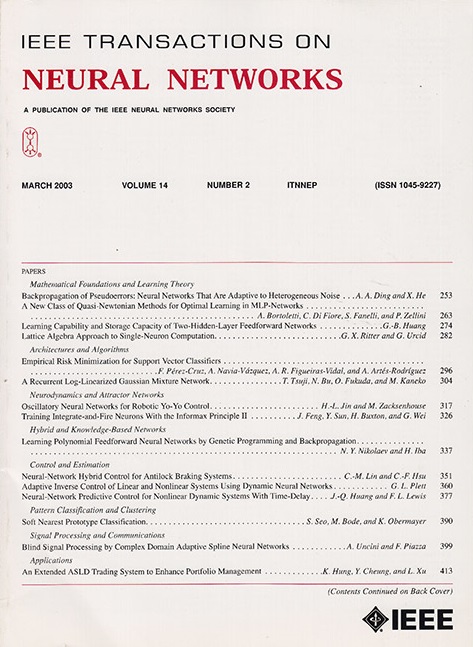SFBM: Shared Feature Bias Mitigating for Long-Tailed Image Recognition.
IF 8.9
1区 计算机科学
Q1 COMPUTER SCIENCE, ARTIFICIAL INTELLIGENCE
IEEE transactions on neural networks and learning systems
Pub Date : 2025-08-08
DOI:10.1109/tnnls.2025.3586215
引用次数: 0
Abstract
Long-tailed distribution exists in real-world scenario and compromises the performance of recognition models. In this article, we point out that a neural network classifier has a shared feature bias, which tends to regard the shared features among different classes as head-class discriminative features, leading to misclassifications on tail-class samples under long-tailed scenarios. To solve this issue, we propose a shared feature bias mitigating (SFBM) framework. Specifically, we create two parallel classifiers trained concurrently with the baseline classifier, using our special training loss. The parallel classifier weight sums are then used for estimating the shared feature components in baseline classifier weights. Finally, we rectify the baseline classifier by removing the estimated shared feature components from it while supplementing the parallel classifier weights class by class to the rectified classifier weights, mitigating shared feature bias. Our proposed SFBM demonstrates broad compatibility with nearly all recognition methods while maintaining high computational efficiency, as it introduces no additional computation during inference. Extensive experiments on CIFAR10/100-LT, ImageNet-LT, and iNaturalist 2018 demonstrate that simply incorporating SFBM during the training phase consistently boosts the performance of various state-of-the-art methods by significant margins. The complete source code will be made publicly available at https://github.com/bzbz-bot/SFBM.SFBM:长尾图像识别的共享特征偏差抑制。
长尾分布存在于现实场景中,影响了识别模型的性能。在本文中,我们指出神经网络分类器存在共享特征偏差,它倾向于将不同类别之间的共享特征视为头类判别特征,从而导致长尾场景下尾类样本的错误分类。为了解决这个问题,我们提出了一个共享特征偏差缓解(SFBM)框架。具体来说,我们使用我们的特殊训练损失创建了两个与基线分类器同时训练的并行分类器。然后使用并行分类器权重和来估计基线分类器权重中的共享特征分量。最后,我们通过去除估计的共享特征分量来校正基线分类器,同时将并行分类器权重逐类补充到校正后的分类器权重中,以减轻共享特征偏差。我们提出的SFBM证明了与几乎所有识别方法的广泛兼容性,同时保持了很高的计算效率,因为它在推理过程中不引入额外的计算。在CIFAR10/100-LT、ImageNet-LT和iNaturalist 2018上进行的大量实验表明,在训练阶段简单地结合SFBM可以显著提高各种最先进方法的性能。完整的源代码将在https://github.com/bzbz-bot/SFBM上公开提供。
本文章由计算机程序翻译,如有差异,请以英文原文为准。
求助全文
约1分钟内获得全文
求助全文
来源期刊

IEEE transactions on neural networks and learning systems
COMPUTER SCIENCE, ARTIFICIAL INTELLIGENCE-COMPUTER SCIENCE, HARDWARE & ARCHITECTURE
CiteScore
23.80
自引率
9.60%
发文量
2102
审稿时长
3-8 weeks
期刊介绍:
The focus of IEEE Transactions on Neural Networks and Learning Systems is to present scholarly articles discussing the theory, design, and applications of neural networks as well as other learning systems. The journal primarily highlights technical and scientific research in this domain.
 求助内容:
求助内容: 应助结果提醒方式:
应助结果提醒方式:


